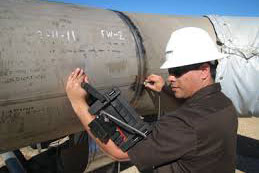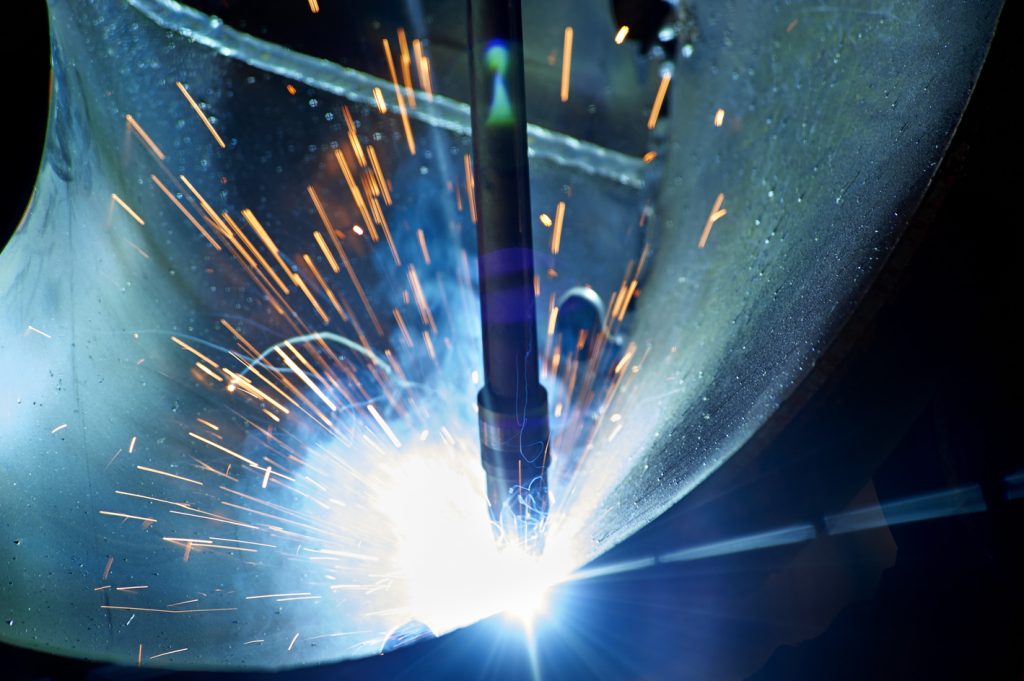Top Tips for Effective Welding Inspection in Gilbert Arizona: A Comprehensive Guide
Top Tips for Effective Welding Inspection in Gilbert Arizona: A Comprehensive Guide
Blog Article
Discovering the Significance of Welding Evaluation in Industrial Applications: Securing Against Failures and Enhancing Durability
Welding inspection works as a critical line of protection in commercial applications, making certain the architectural stability and integrity of welded elements. By methodically determining issues such as porosity and insufficient combination, inspections not only protect against failings yet additionally prolong the lifespan of crucial possessions. Abiding by industry standards enhances both safety and security and operational effectiveness; nonetheless, the implications of overlooking these techniques can be serious. As we analyze the diverse advantages of regular inspections, it becomes evident that comprehending these dynamics is not simply an issue of compliance yet a calculated necessary for long life and risk mitigation (Welding Inspection Gilbert Arizona).
Function of Welding Evaluation
Welding assessment works as a vital protect in industrial applications, guaranteeing that welded structures meet specified requirements of high quality and safety. This procedure includes a methodical exam of welds to confirm their honesty, toughness, and compliance with recognized codes and specifications. The function of welding evaluation is multifaceted, incorporating both visual assessments and non-destructive testing techniques, which might include ultrasonic, radiographic, or magnetic particle screening.

In addition, welding evaluation plays an essential function in regulative conformity. Numerous markets are governed by strict safety criteria, requiring complete documents and recognition of welding techniques. By maintaining these documents, organizations can demonstrate adherence to security regulations, consequently cultivating depend on among customers and stakeholders. Eventually, the function of welding assessment is vital in promoting safety, enhancing performance, and shielding investments in industrial facilities.
Usual Welding Flaws

Among the most prevalent defects is porosity, identified by small gas pockets trapped within the weld metal. This occurs because of pollutants or incorrect protecting gas, jeopardizing the weld's toughness. Another considerable issue is incomplete blend, where the weld steel fails to bond appropriately with the base product, possibly resulting in architectural weaknesses.
Splits can likewise establish throughout or after the welding process, usually connected to thermal tensions or inappropriate cooling rates. Furthermore, damaging, where the base metal is eroded along the weld bead, can damage the joint and is commonly caused by extreme warmth input or incorrect technique.
Additionally, lack of penetration happens when the weld steel does not get to the origin of the joint, leading to insufficient strength. Comprehending these common flaws is essential for welders and inspectors alike to make certain that bonded frameworks meet safety and performance requirements, eventually stopping possible failings in commercial applications.
Benefits of Routine Examinations
Routine inspections offer as a crucial secure in making certain the integrity and durability of bonded frameworks. These examinations recognize potential issues and weaknesses that might endanger the honesty of welds, enabling for timely remediation prior to problems escalate. By executing a structured assessment regimen, companies can considerably lower the risk of disastrous failures that might bring about expensive downtime, equipment my latest blog post replacement, or perhaps mishaps.
In addition, normal assessments contribute to enhanced high quality control throughout the welding procedure. By sticking to a constant examination schedule, companies can ensure that their welding practices satisfy recognized top quality benchmarks and finest practices. This not only cultivates a culture of responsibility but likewise encourages constant renovation amongst welding workers.
On top of that, routine assessments assist in far better upkeep planning. By determining damage early, organizations can purposefully set up substitutes and repair services, minimizing disturbance to procedures. This positive strategy ultimately results in extended possession lifespan and enhanced overall performance.
Finally, a dedication to routine inspections can improve a company's reputation in the sector. Stakeholders and clients progressively value companies that focus on security and high quality, therefore enhancing trust fund and potentially bring about increased business possibilities.
Market Requirements and Laws
Sticking to industry standards and regulations is a basic element of welding inspection that complements the advantages of normal examinations. These criteria, developed by companies such as the American Welding Culture (AWS) and the American Culture of Mechanical Designers (ASME), offer a structure for finest practices in welding processes, click to read products, and examination strategies. Compliance with these regulations guarantees that welds fulfill the required top quality and safety criteria, considerably reducing the risk of structural failures.
Regulative bodies like the Occupational Security and Wellness Administration (OSHA) even more impose standards that secure employees and the setting during welding operations. By adhering to these established criteria, sectors can enhance the reliability of their frameworks and components, ensuring they carry out as planned under different operational problems.
Additionally, adherence to industry requirements fosters uniformity in high quality control, facilitating smoother communication amongst stakeholders and regulatory companies. This positioning not just decreases responsibility threats but likewise improves the reputation of companies in open markets. Eventually, compliance with welding requirements and laws is not just a legal obligation; it is an essential investment in safety, efficiency, and lasting functional success.
Future Trends in Welding Assessment
As sectors continue to progress, the future of welding assessment is poised to incorporate innovative modern technologies that boost precision and efficiency. One of one of the most considerable patterns is the adoption of automation and robotics in assessment processes. Automated systems can carry out evaluations swiftly, lowering human mistake and enhancing throughput in making atmospheres.
In addition, the assimilation of expert system (AI) and artificial intelligence formulas will certainly allow anticipating analytics, enabling real-time assessments and positive maintenance (Welding Inspection Gilbert go to website Arizona). By examining information from previous assessments, these technologies can recognize patterns that could suggest prospective failings, thus prolonging the life-span of welded parts

Moreover, the fad towards digitalization will result in enhanced information monitoring systems that facilitate much better tracking, reporting, and conformity with industry standards. In summary, the future of welding examination is identified by technological advancements that assure to significantly enhance integrity, safety, and operational effectiveness in different commercial applications.
Verdict
In verdict, welding inspection serves a vital function in making certain the integrity and toughness of bonded frameworks throughout various industrial applications. By identifying problems such as porosity and insufficient fusion, routine evaluations play a considerable duty in risk mitigation and quality control. Adherence to industry criteria and regulations better boosts operational security and dependability. As advancements in technology continue to evolve, the future of welding inspection assures boosted accuracy and efficiency, inevitably adding to the longevity of essential facilities.
Welding assessment offers as an essential line of defense in commercial applications, ensuring the structural honesty and reliability of bonded components.Welding examination serves as a vital secure in industrial applications, guaranteeing that welded frameworks satisfy specified standards of quality and safety and security - Welding Inspection Gilbert Arizona. Ultimately, the duty of welding evaluation is crucial in advertising safety, boosting efficiency, and securing investments in commercial infrastructure
These standards, established by companies such as the American Welding Society (AWS) and the American Society of Mechanical Designers (ASME), give a framework for best practices in welding processes, products, and examination strategies.In verdict, welding assessment offers an essential function in making certain the honesty and sturdiness of bonded structures throughout numerous industrial applications.
Report this page